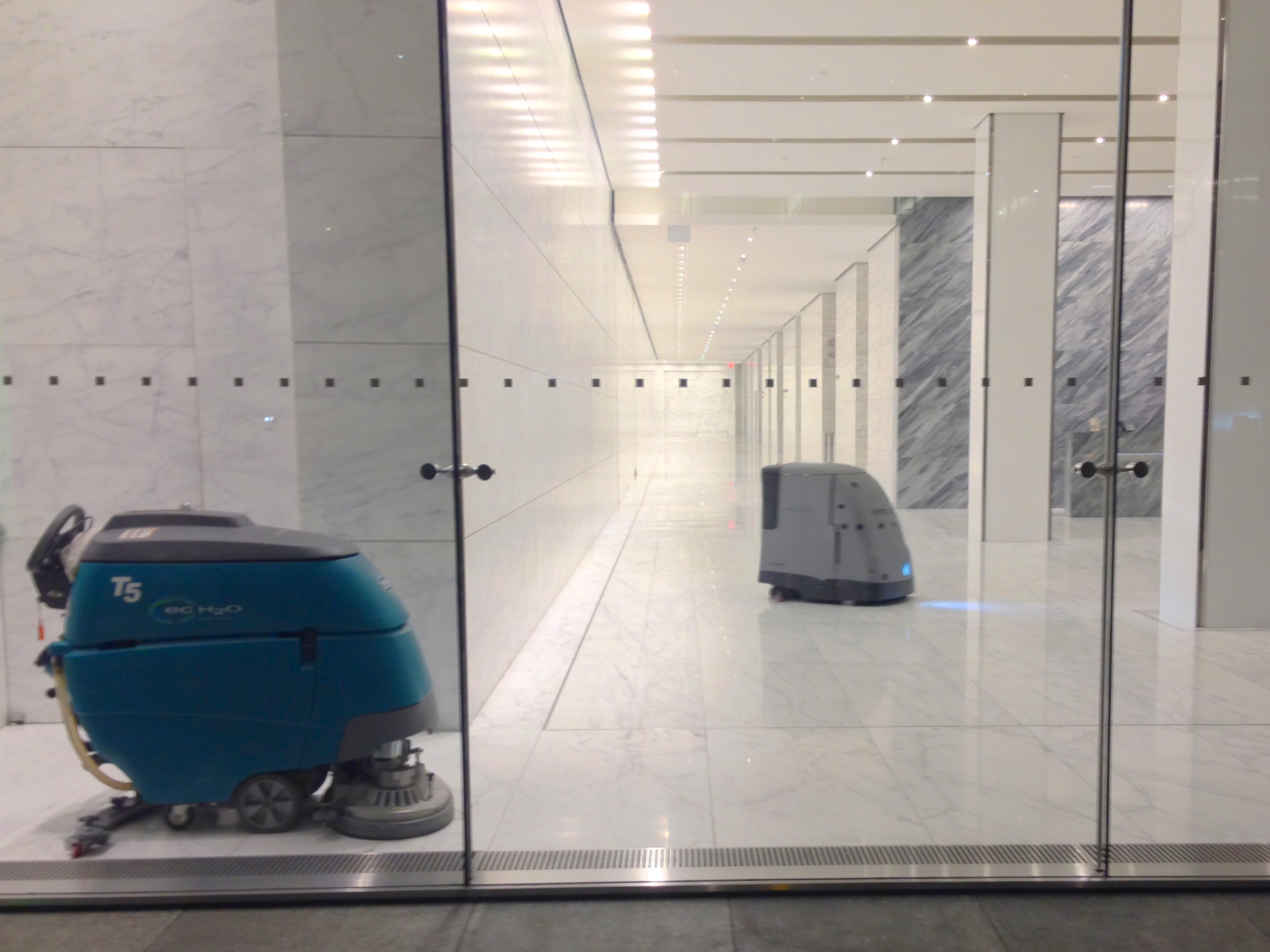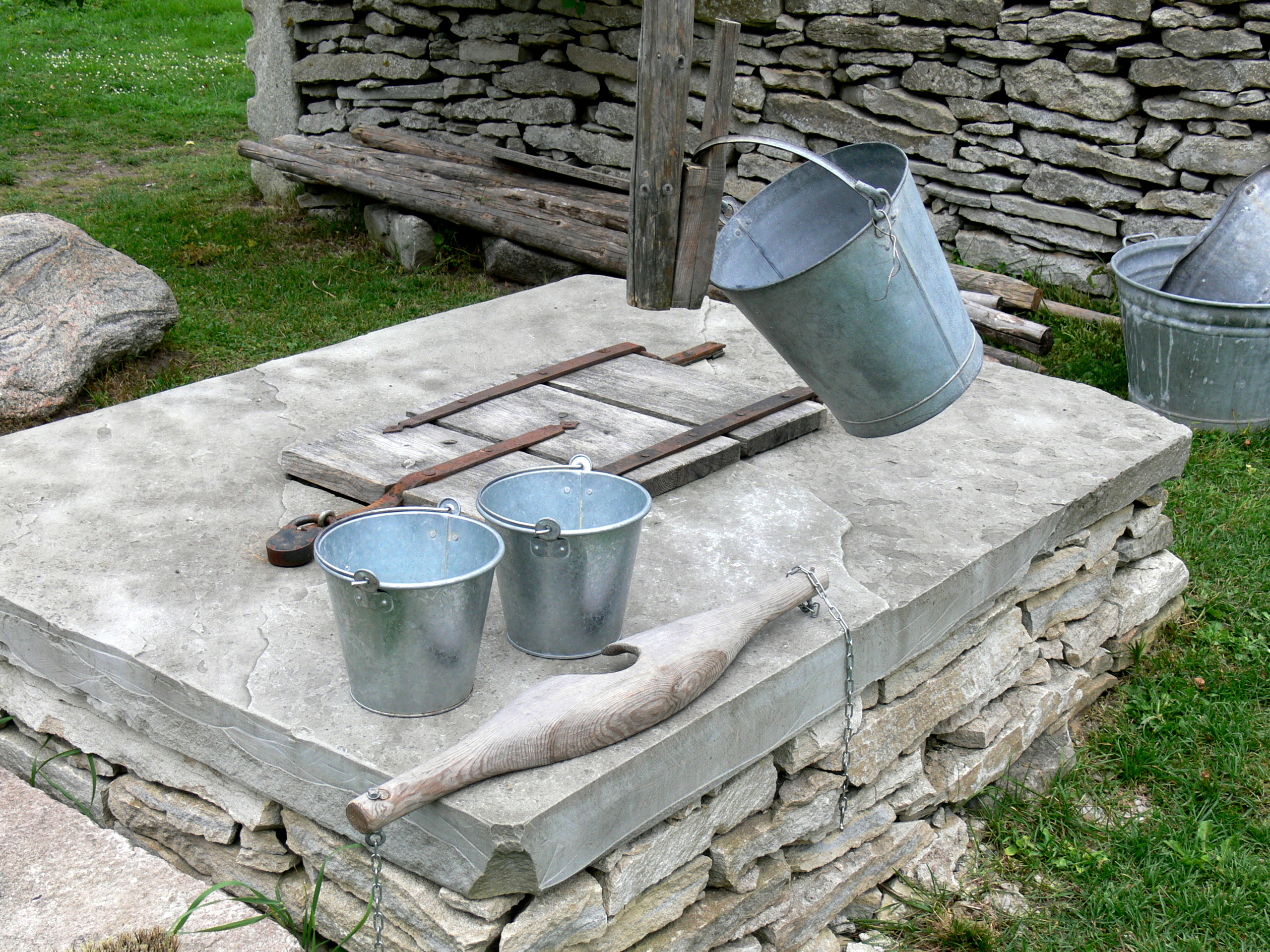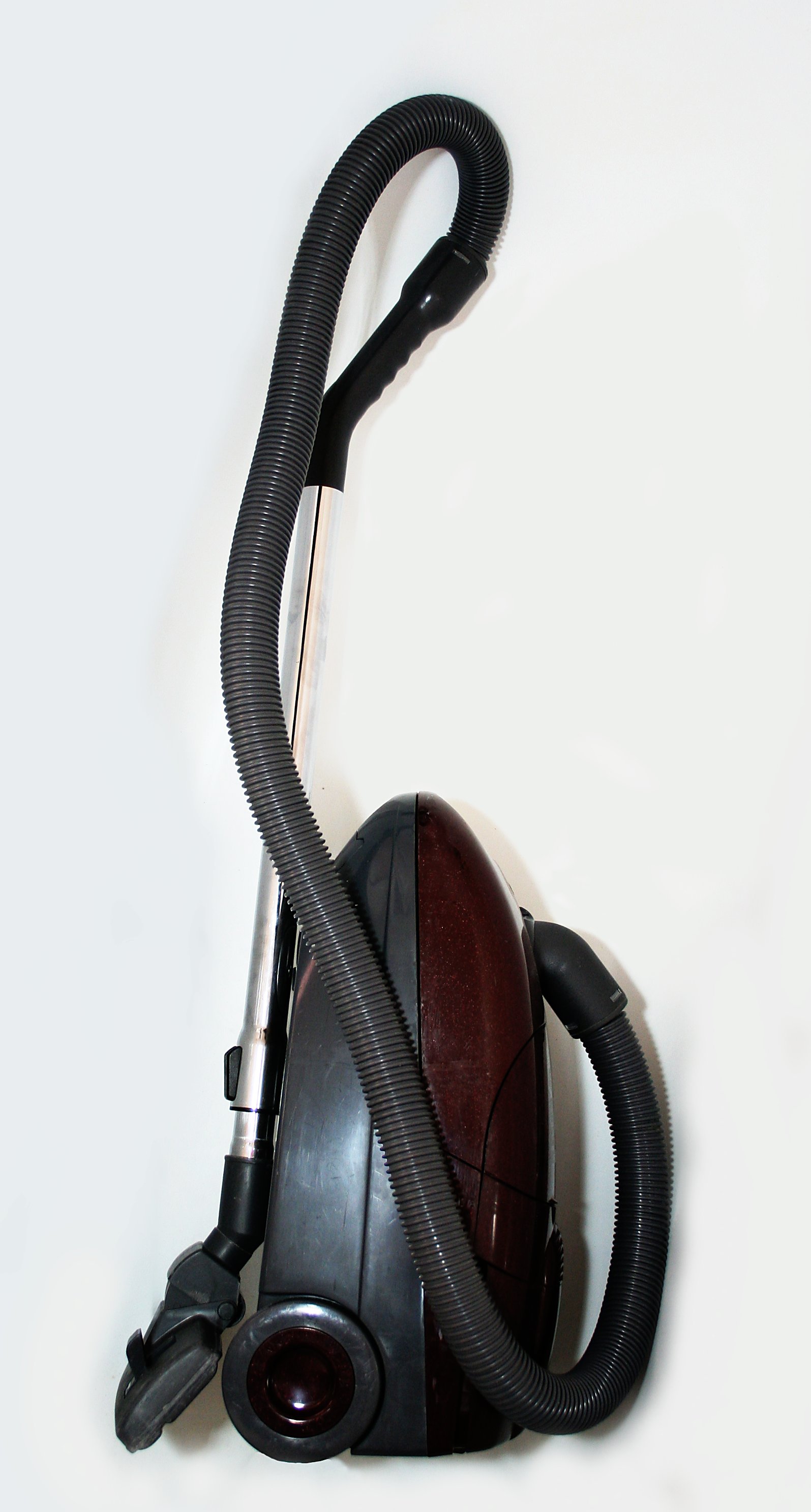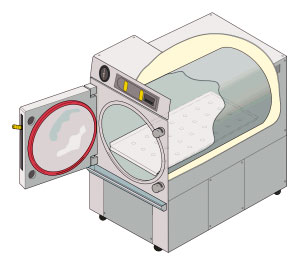|
Mop
A mop (such as a floor mop) is a mass or bundle of coarse strings or yarn, etc., or a piece of cloth, sponge or other absorbent material, attached to a pole or stick. It is used to soak up liquid, for cleaning floors and other surfaces, to mop up dust, or for other cleaning purposes. History The word (then spelled ''mappe'') is attested in English as early as 1496, but new refinements and variations of mop designs have been introduced, from time to time. For example, American inventor Jacob Howe received US patent #241 for a mop holder in 1837 and Thomas W. Stewart (US patent #499,402) in 1893. In her book ''Maggie's Memories'' Margaret Wadkin (late of Hickling, near Melton Mowbray in England) describes the use of a mop nail for constructing homemade mops from old pieces of cloth during her village childhood in the early 20th century; Types Many different proprietary designs are available, but the classic string mop design is also still widely used. Dry mop, dust mop A ... [...More Info...] [...Related Items...] OR: [Wikipedia] [Google] [Baidu] |
Microfiber
Microfiber (or microfibre) is synthetic fiber finer than one denier or decitex/thread, having a diameter of less than ten micrometers. A strand of silk is about one denier and about a fifth of the diameter of a human hair. The most common types of microfiber are made variously of polyesters; polyamides (e.g., nylon, Kevlar, Nomex); and combinations of polyester, polyamide, and polypropylene. Microfiber is used to make mats, knits, and weaves, for apparel, upholstery, industrial filters, and cleaning products. The shape, size, and combinations of synthetic fibers are chosen for specific characteristics, including softness, toughness, absorption, water repellence, electrostatics, and filtering ability. History Production of ultra-fine fibers (finer than 0.7 denier) dates to the late 1950s, using melt-blown spinning and flash spinning techniques. Initially, only fine staples of random length could be manufactured and very few applications were found. Then came experiments to ... [...More Info...] [...Related Items...] OR: [Wikipedia] [Google] [Baidu] |
Polyester
Polyester is a category of polymers that contain the ester functional group in every repeat unit of their main chain. As a specific material, it most commonly refers to a type called polyethylene terephthalate (PET). Polyesters include naturally occurring chemicals, such as in plants and insects, as well as synthetics such as polybutyrate. Natural polyesters and a few synthetic ones are biodegradable, but most synthetic polyesters are not. Synthetic polyesters are used extensively in clothing. Polyester fibers are sometimes spun together with natural fibers to produce a cloth with blended properties. Cotton-polyester blends can be strong, wrinkle- and tear-resistant, and reduce shrinking. Synthetic fibers using polyester have high water, wind and environmental resistance compared to plant-derived fibers. They are less fire-resistant and can melt when ignited. Liquid crystalline polyesters are among the first industrially used liquid crystal polymers. They are used f ... [...More Info...] [...Related Items...] OR: [Wikipedia] [Google] [Baidu] |
Floor Cleaning
Floor cleaning is a major occupation throughout the world. The main job of most cleaners is to clean floors. Reasons for cleaning floors The principal reasons for floor cleaning are: * To prevent injuries due to tripping or slipping. Injuries due to slips and trips on level floors are a major cause of accidental injury or death. Bad practice in floor cleaning is itself a major cause of accidents. * To beautify the floor. * To remove stains, dirt, litter and obstructions. * To remove grit and sand which scratch and wear down the surface. * To remove allergens, in particular dust. * To prevent wear to the surface (e.g. by using a floor wax or protective sealant). * To make the environment sanitary (e.g. in kitchens). * To reduce ingestion/inhalation rates of microplastics. * To maintain an optimum traction (e.g. for dance floors). *Reduce workload inbetween shifts (e.g. dedicated cleaning crew). Methods of floor cleaning The treatment needed for different types of floor ... [...More Info...] [...Related Items...] OR: [Wikipedia] [Google] [Baidu] |
Floor Scrubber
A floor scrubber is a floor cleaning device. It can be a simple tool such as a floor mop or floor brush, or in the form of a walk-behind or a ride-on machine to clean larger areas by injecting water with cleaning solution, scrubbing, and lifting the residue off the floor. With advancements in robotics, autonomous floor-scrubbing robots are available as well. Automatic floor scrubbers Automatic floor scrubbers, also known as auto scrubbers, are a type of floor cleaning machine that are used to scrub a floor clean of light debris, dust, oil, grease or floor marks. These machines have either a rotary (disk) or cylindrical scrubbing head and an automated system for dispensing cleaning solution and then vacuuming it up. So, in one pass over the floor, a user can dispense a cleaning agent, scrub it into the floor, then vacuum it all up with an autoscrubber squeegee attachment at the back of the machine. Auto scrubbers have a separate dispensing (solution) tank and collection (reco ... [...More Info...] [...Related Items...] OR: [Wikipedia] [Google] [Baidu] |
Floor Buffer
A floor scrubber is a floor cleaning device. It can be a simple tool such as a floor mop or floor brush, or in the form of a walk-behind or a ride-on machine to clean larger areas by injecting water with cleaning solution, scrubbing, and lifting the residue off the floor. With advancements in robotics, autonomous floor-scrubbing robots are available as well. Automatic floor scrubbers Automatic floor scrubbers, also known as auto scrubbers, are a type of floor cleaning machine that are used to scrub a floor clean of light debris, dust, oil, grease or floor marks. These machines have either a rotary (disk) or cylindrical scrubbing head and an automated system for dispensing cleaning solution and then vacuuming it up. So, in one pass over the floor, a user can dispense a cleaning agent, scrub it into the floor, then vacuum it all up with an autoscrubber squeegee attachment at the back of the machine. Auto scrubbers have a separate dispensing (solution) tank and collection (re ... [...More Info...] [...Related Items...] OR: [Wikipedia] [Google] [Baidu] |
Mop Dog
The Komondor (), also known as the Hungarian sheepdog, is a large, white-coloured Hungarian breed of livestock guardian dog with a long, corded coat. Sometimes referred to as ' mop dogs', the Komondor is a long-established dog breed commonly employed to guard livestock and other property. The Komondor was brought to Europe by the Cumans and the oldest known mention of it is in a Hungarian codex from 1544. The Komondor breed has been declared one of Hungary’s national treasures, to be preserved and protected from modification. Etymology and history Komondors were brought to Hungary by Cumans, the Turkic speaking, nomadic people who settled in Hungary during the 12th and 13th century. The name Komondor derives from ''*Koman-dor'', meaning "Cuman dog". The breed descends from Tibetan dogs and came from Asia with the Cumans, whose homeland might have been near the Yellow River. In the late 10th century, Mongols began to expand their territories at the expense of the Cumans, f ... [...More Info...] [...Related Items...] OR: [Wikipedia] [Google] [Baidu] |
Cleaning Tools
Cleaning tools include the following: *Acoustic cleaning * Air blaster * Air knife * Besom *Broom *Brush *Building maintenance unit *Camel-hair brush * Carbon dioxide cleaning * Carpet beater *Carpet sweeper *Chamois leather * Cleret * Cyclone dust collector *Dishwasher * Dry-ice blasting *Feather duster * Floor scrubber * Floorcloth *Hataki * Hot water extraction * Ice blasting (cleaning) * Laundroid * Laundry ball * Lint remover * Melamine foam * Microfibre cloth * Mop * Mop bucket cart * NAV-{{CO2 system * Needlegun scaler * Parts washer *Peg wood *Peshtemal * Pigging * Pipe cleaner *Pith wood * Posser * Pressure washing * Propane burnisher *Pumice *Reason washing machine * Scrubber (brush) * Shaker broom vise *Silent butler * Soap shaker * Sonic soot blowers * Sponge (material) * Squeegee *Steam mop * Strigil * Swiffer *Tawashi * Thor washing machine * Tongue cleaner *Turk's head brush *Vacuum cleaner * Vacuum truck * Vapor steam cleaner *Wash rack *Washing machine A washing ... [...More Info...] [...Related Items...] OR: [Wikipedia] [Google] [Baidu] |
Polyamide
A polyamide is a polymer with repeating units linked by amide bonds. Polyamides occur both naturally and artificially. Examples of naturally occurring polyamides are proteins, such as wool and silk. Artificially made polyamides can be made through step-growth polymerization or solid-phase synthesis yielding materials such as nylons, aramids, and sodium polyaspartate. Synthetic polyamides are commonly used in textiles, automotive industry, carpets, kitchen utensils and sportswear due to their high durability and strength. The transportation manufacturing industry is the major consumer, accounting for 35% of polyamide (PA) consumption. Classification Polymers of amino acids are known as polypeptides or proteins. According to the composition of their main chain, synthetic polyamides are classified as follows: All polyamides are made by the formation of an amide function to link two molecules of monomer together. The monomers can be amides themselves (usually in the form of a ... [...More Info...] [...Related Items...] OR: [Wikipedia] [Google] [Baidu] |
Bucket
A bucket is typically a watertight, vertical cylinder or truncated cone or square, with an open top and a flat bottom, attached to a semicircular carrying handle called the ''bail''. A bucket is usually an open-top container. In contrast, a pail can have a top or lid and is a shipping container. In common usage, the two terms are often used interchangeably. Types and uses A number of bucket types exist, used for a variety of purposes. Though most of these are functional purposes, a number, including those constructed from precious metals, are used for ceremonial purposes. Common types of bucket and their adjoining purposes include: * Water buckets used to carry water * Household and garden buckets used for carrying liquids and granular products * Elaborate ceremonial or ritual buckets constructed of bronze, ivory or other materials, found in several ancient or medieval cultures, sometimes known by the Latin for bucket, * Large scoops or buckets attached to loaders and teleha ... [...More Info...] [...Related Items...] OR: [Wikipedia] [Google] [Baidu] |
Vacuum Cleaner
A vacuum cleaner, also known simply as a vacuum or a hoover, is a device that causes suction in order to remove dirt from floors, upholstery, draperies, and other surfaces. It is generally electrically driven. The dirt is collected by either a dustbag or a cyclone for later disposal. Vacuum cleaners, which are used in homes as well as in industry, exist in a variety of sizes and models—small battery-powered hand-held devices, wheeled canister models for home use, domestic central vacuum cleaners, huge stationary industrial appliances that can handle several hundred litres of dirt before being emptied, and self-propelled vacuum trucks for recovery of large spills or removal of contaminated soil. Specialized shop vacuums can be used to suck up both solid matter and liquids. Name Although ''vacuum cleaner'' and the short form ''vacuum'' are neutral names, in some countries (UK, Ireland) ''hoover'' is used instead as a genericized trademark, and as a verb. The name comes from t ... [...More Info...] [...Related Items...] OR: [Wikipedia] [Google] [Baidu] |
Clean Room
A cleanroom or clean room is an engineered space, which maintains a very low concentration of airborne particulates. It is well isolated, well-controlled from contamination, and actively cleansed. Such rooms are commonly needed for scientific research, and in industrial production for all nanoscale processes, such as semiconductor manufacturing. A cleanroom is designed to keep everything from dust, to airborne organisms, or vaporised particles, away from it, and so from whatever material is being handled inside it. The other way around, a cleanroom can also help keep materials escaping from it. This is often the primary aim in hazardous biology and nuclear work, in pharmaceutics and in virology. Cleanrooms typically come with a cleanliness level quantified by the number of particles per cubic meter at a predetermined molecule measure. The ambient outdoor air in a typical urban area contains 35,000,000 particles for each cubic meter in the size range 0.5 μm and bigger, eq ... [...More Info...] [...Related Items...] OR: [Wikipedia] [Google] [Baidu] |
Autoclave
An autoclave is a machine used to carry out industrial and scientific processes requiring elevated temperature and pressure in relation to ambient pressure and/or temperature. Autoclaves are used before surgical procedures to perform sterilization and in the chemical industry to cure coatings and vulcanize rubber and for hydrothermal synthesis. Industrial autoclaves are used in industrial applications, especially in the manufacturing of composites. Many autoclaves are used to sterilize equipment and supplies by subjecting them to pressurized saturated steam at for around 30-60 minutes at a pressure of 15 psi (103 kPa or 1.02 atm) depending on the size of the load and the contents. The autoclave was invented by Charles Chamberland in 1879, although a precursor known as the steam digester was created by Denis Papin in 1679. The name comes from Greek ''auto-'', ultimately meaning self, and Latin ''clavis'' meaning key, thus a self-locking device. Uses Sterilization au ... [...More Info...] [...Related Items...] OR: [Wikipedia] [Google] [Baidu] |










